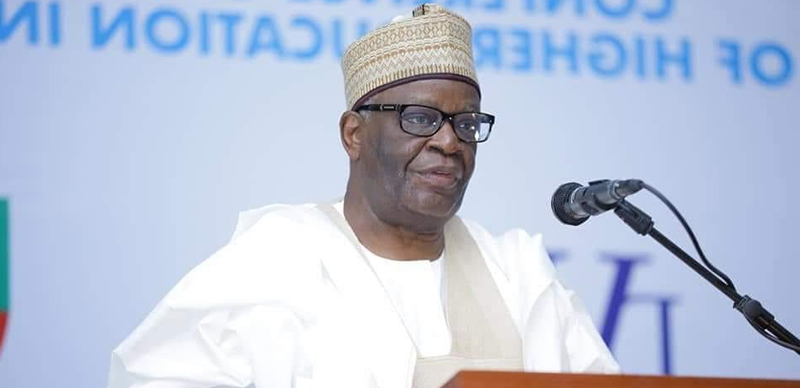According to Nigeria’s Energy Transition Plan, the Chief of Staff to the President, Professor Ibrahim Gambari, has stated that the State House would set an example for how government institutions throughout the world are embracing renewable energy alternatives.
According to a statement by the director of information, State House, Abiodun Oladunjoye, the Plan seeks to tackle the dual crises of energy poverty and climate change with renewable energy contributing at least 30 per cent to the energy mix by the year 2030.
Professor Gambari said this in State House, Abuja, when he received in audience a three-man team from EM-ONE Energy Solutions that paid him a courtesy visit as a follow up to an earlier presentation on options available to the State House to address its energy challenges.
According to the Chief of Staff, “the world is now focused on reducing the effect of climate change. What we are looking for is the energy solution that comes with environmental sustainability. For us in the State House, there is the need to live by example. Just like I was impressed by your first presentation, your growing capacity and technological innovation continued to enhance your ability to deliver on your projections. I am happy to note that you could actually upscale the renewable energy solution with more space for the solar panels.”
“I am also glad that you have come to update us as this will enhance our process of deciding which way to go. The State House cannot afford not to be at the forefront with the First Family here, and we cannot afford blackouts and need to reduce how much we spend on diesel and cut down on carbon footprint; so, this is the direction we want to go,” he stressed.
The Chief Executive Officer of EM-ONE, Mir Islam, thanked the Chief of Staff for the opportunity given to the team, noting that, having grown up in this country, “we don’t want Nigeria to be left behind in the global energy transition programme.”
“More than 50 percent of the energy needs of the State House can be provided in the Phase One and can go up to 80 percent, but for space constraints with the possibility to export the excess power generated into the national grid in line with the Energy Transition Plan of Nigeria on public utilities,” he said.
He added that the company’s Pilot Renewable Energy at the Federal Ministry of Works and Housing in Mabushi, Abuja, is a good case study for other public buildings in Nigeria, noting that a similar project would provide the resilience and the cost saving measure that the State House requires.
According to him, “State House, being a very important edifice, would be a role model for all other public buildings especially as climate change is now a point of global focus.”
In his remarks, the permanent secretary State House, Tijjani Umar, said he brought the team following the charge by the chief of staff to work out the best way out of the growing power challenges of the State House; prohibitive cost of power generation as well as the unsustainable carbon footprint on the environment, which is not environmentally friendly and also costly to sustain. “Based on this, we invited EM-ONE for a presentation which recommended the option of a renewable energy solution which is the current trend the world over,” he noted.
“So, they provided options in their initial presentation which will enable us to scale down what we spend on power and are here with a follow up presentation with additional value-adds to enable us to arrive at a decision for a sustainable power solution for the State House,” Umar said.

